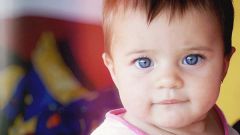Instruction
1
The birth of a child with a syndrome down randomly and doesn't depend on the lifestyle of parents and the influence of adverse environmental factors. Doesn't matter the sex of the baby: boys and girls with this genetic disorder are born with equal frequency. The only thing that increases the risk of the birth of the baby, maternal age (over 35 years), however, Ponderosa women have all the chances of a healthy baby.
2
There are many methods to detect syndrome down syndrome during pregnancy. Go ultrasound at 12 weeks. An indirect sign of the deviation is the thickness of the neck area in excess of 2.5-3 mm. in addition, the value and size of the nasal bone in a fetus with a syndrome down it is either absent or has a very small size. In any case, ultrasound can not give 100% answer about the presence or absence of genetic disorders, the detection of specific features of the syndrome of down is necessary to consult genetics and further examination.
3
Pass screening biochemical research. It is most informative on the timing 10-13 (double test) and 16-18 weeks (triple test). A blood test, doctors can calculate the risk of having a child with syndrome of down, however, to give full assurance that the baby will be sick or healthy, it is impossible. When you receive bad results also the necessary consultations genetics and invasive diagnostics.
4
Invasive prenatal diagnosis is able to give a precise answer about the presence or absence of the child syndrome down's, however, the procedure may lead to interruption of pregnancy and therefore is performed only when there is strong evidence (maternal age over 35 years, burdened by genetic anamnesis, presence of abnormalities based on ultrasound or screening tests blood). In the period of 9.5-12 weeks is typically performed a biopsy of the chorion, at 16-20 weeks — amniocentesis (examination of amniotic fluid), after 20-22 weeks cordocentesis (umbilical cord blood study).
5
If the deviation in the fetus was not identified for one reason or another, it can be defined by their appearance already in the unborn child. In most cases, a newborn with a syndrome of down has a "flat face", slanted eyes, the brachycephalic (short skull), skin fold on the neck etc If in doubt is a blood test for karyotype.


